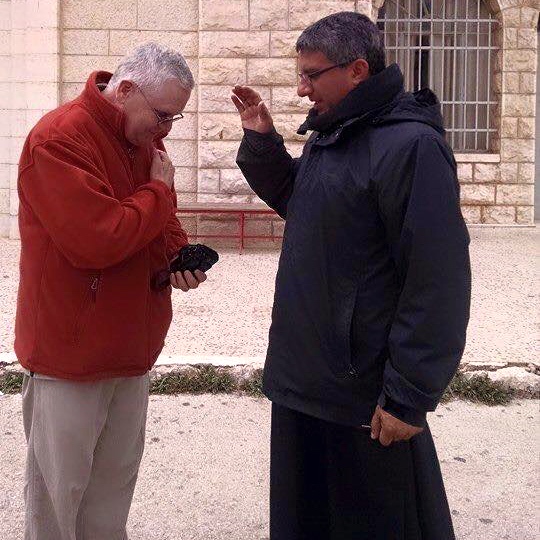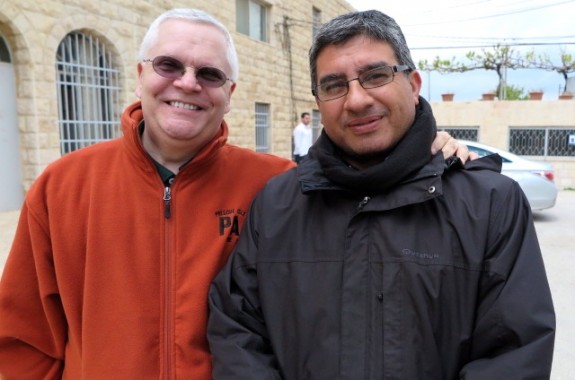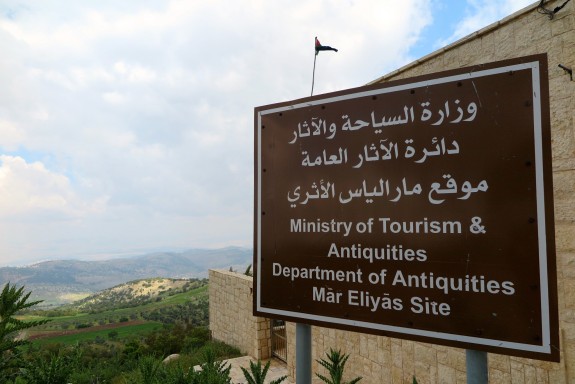
Monday took us to two remarkable sites: a hilltop adjoining the village where Elijah was born, and a parish church that has become a popular shrine devoted to Mary.
Atop a hill, overlooking Elijah’s birthplace, we visited the ruins of a 6th century church. Below, you can see the nave and the center aisle, where ushers would stroll the pews and rattle their baskets and scold parents for bringing juice boxes and cookies to church.
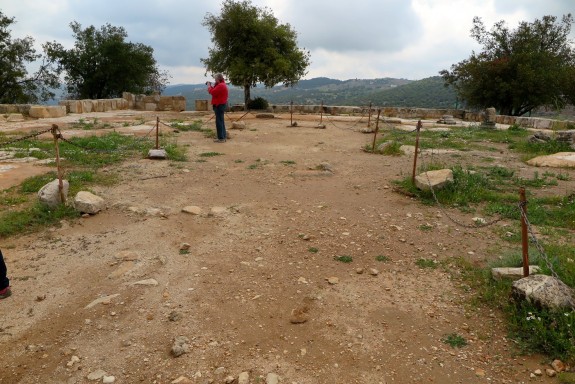
Okay, maybe not. Actually, churches of this period didn’t have pews as we understand them. People spent most of the liturgy standing. (Good luck trying that today.) Some of the mosaic work survives—including an inscription on the floor, asking Elijah for his blessings.
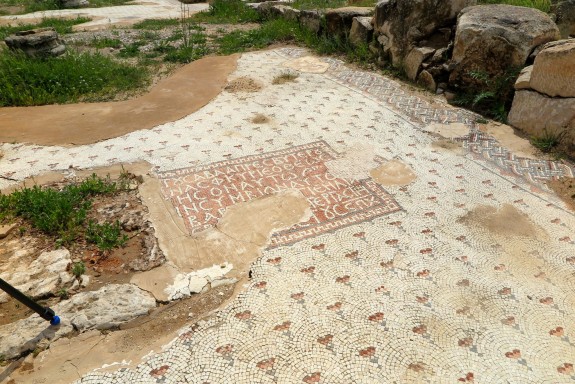
A baptismal font still stands near the entrance.
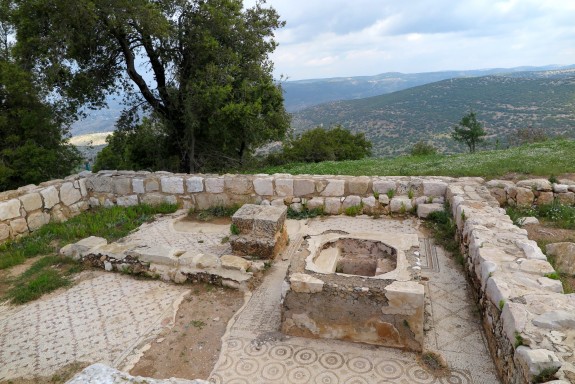
Just outside what would have been the front door is an expansive courtyard. Our guide told me that this was more than just a gathering place for coffee and donuts after the liturgy. “This is where the unbaptized would come to listen to the service,” he told me. “They weren’t permitted inside the doors of the church.”
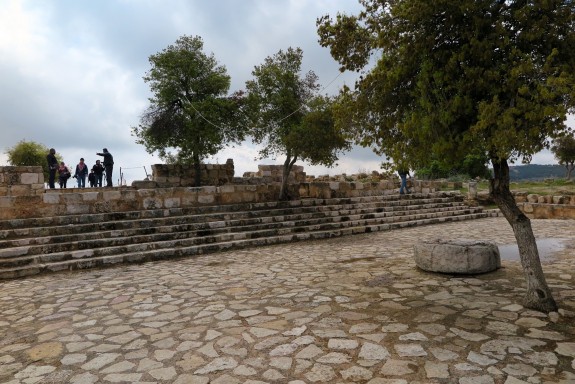
The view of Elijah’s birthplace in the valley below is pretty spectacular.
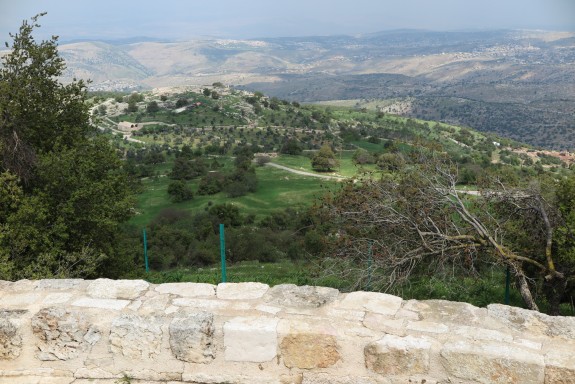
After an hour or so at this site, we boarded the bus and headed to Anjara and the Shrine of Our Lady of the Mount. As we disembarked I made a mental note: tell the king he needs to hire a proofreader for his Department of Transportation.
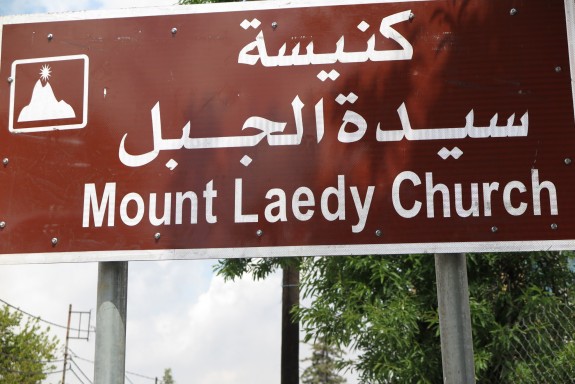
The shrine consists of two buildings: the parish church and a newer building containing a beloved statue of Mary and the baby Jesus.
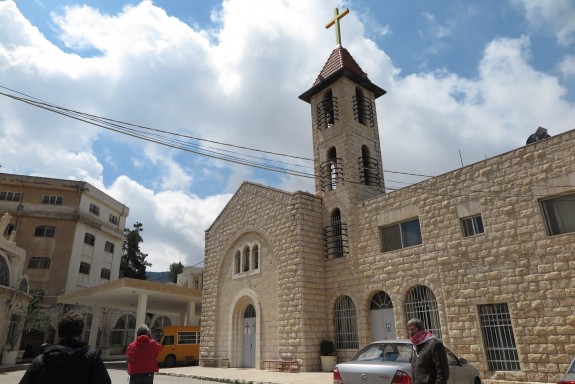
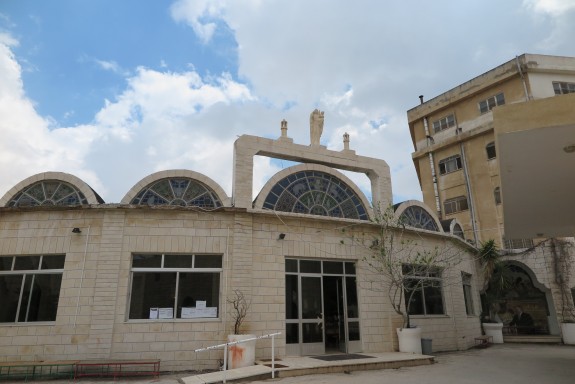
A few years ago, Zenit wrote about the place and its compelling story:
Nestled in the city of Anjara, Jordan, the Shrine was established by Fr. Yousef Salmeh Nammat, in honor of the Virgin Mary. According to tradition, Jesus and his mother Mary passed through the town and rested in a cave in the Ajloun Mountains near the parish, which is situated in the hills of Gilead, east of the Jordan Valley.
The Shrine also houses a school as well as an orphanage for local children who have either lost their parents or abandoned there due to poverty. “The youngest child we had here was 11 days old,” Fr. Hugo Alvaniz, pastor of the parish, told ZENIT. “Her mother left her here but then several months later, reappeared and the child went back to his mother.”
“I do hope she is ok,” he said with a look of genuine concern.
Fr. Alvaniz, who hails from Argentina, belongs to the Religious Family of the Incarnate Word, a religious order of priests and nuns who began their work in Anjara in 2004. Anticipation is palpable in the parish as large billboard of Pope Francis and King Abdullah II of Jordan overlooks the Shrine. Children of the orphanage will be given the privilege of singing a traditional Spanish hymn to the Blessed Virgin Mary when the Holy Father arrives on Saturday. Shortly after Mass, the religious Sisters of the Incarnate Word gather the children to practice before the big event.
But there is something else that unites this parish to the Blessed Mother. Enclosed in a glass case is a statue of the Virgin Mary with the Child Jesus. On May 6th, 2010, a nun, three women and several school girls were cleaning the parish. As the nun began to clean the glass door, she was startled by the statue of the Blessed Mother, which began to blink Her eyes. The nun and one of the girls who witnessed the Blessed Mother’s eyes blink, screamed as tears of blood streamed down the face of the statue. Members of the parish ran to the Church after hearing the commotion and witnessed the supernatural event.
After the bishop called for an investigation into the matter, tests from a nearby hospital confirmed the tears were human blood. Shortly after, the Latin Patriarchate of Jerusalem recognized the validity of the miraculous event.
“The Latin Patriarch of Jersusalem said, in front of 5,000 people: ‘The Virgin Mary weeps for us and with us,’” Fr. Alvaniz recalled. “Why did this happen? We don’t know. But after it happened, the Ar-rabi Al-arabi (the Arab Spring) occurred a few months later. We have missionaries in Egypt, Tunis and Iraq and they are still there.”
Fr. Hugo stopped by to see us while we were there, explain the history of the shrine and answer questions. The facility, he told us, also includes an orphanage, a school, and a center to help children with disabilities. (Check out their Facebook page for more.)
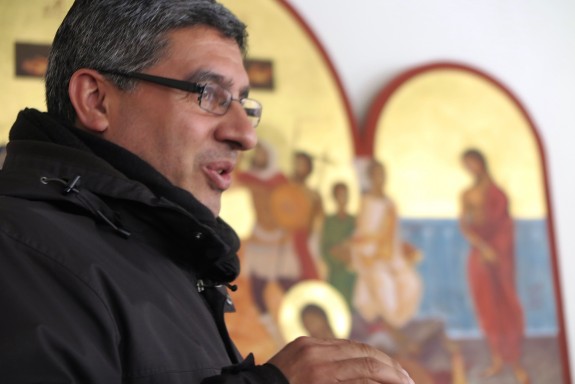
He also unlocked the glass case containing the statue, so we could get a closer look.
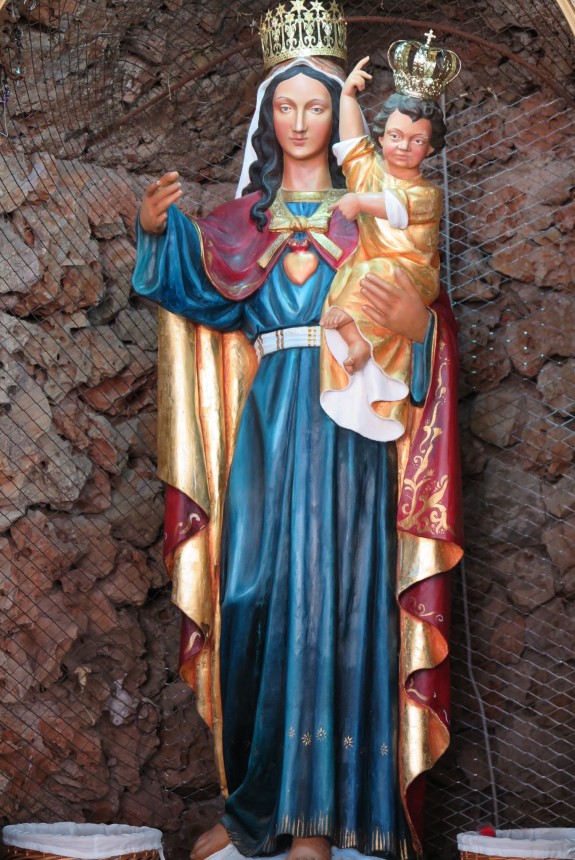
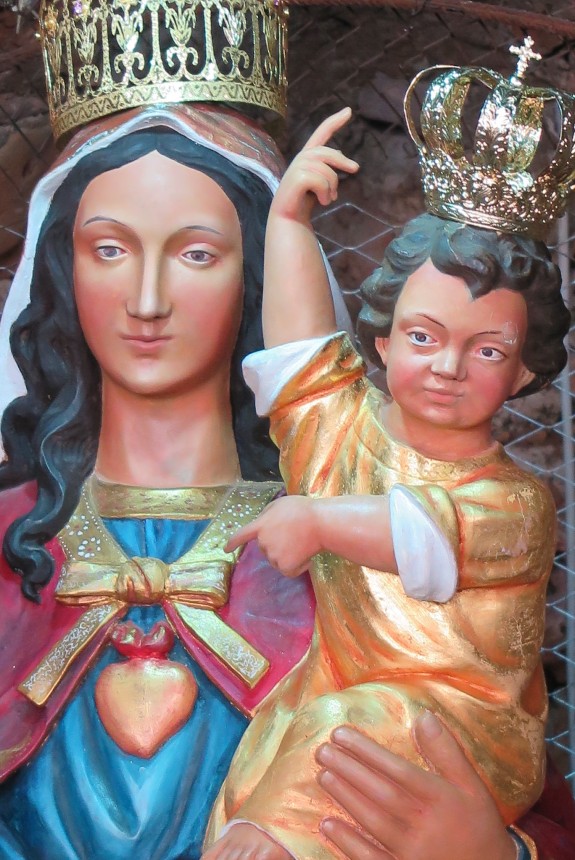
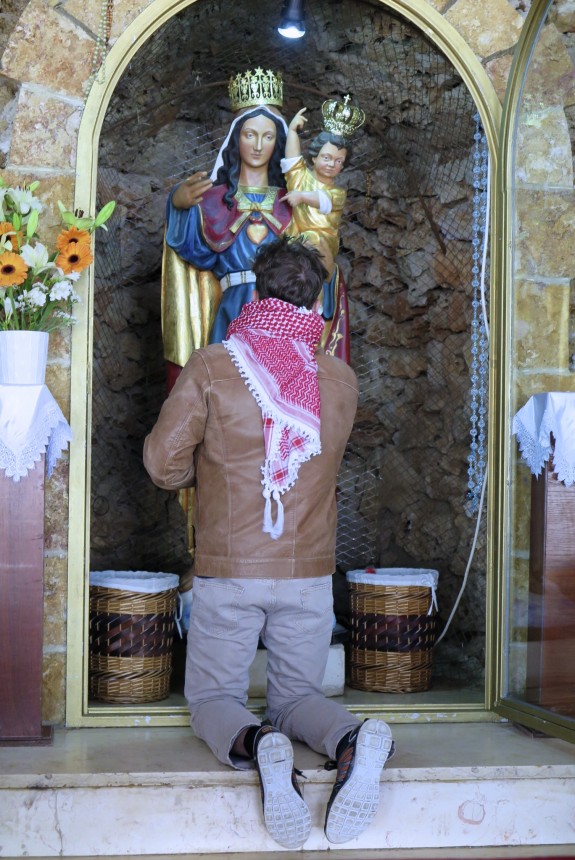
A large sign at the entrance to the building shows a picture of the statue weeping tears of blood.
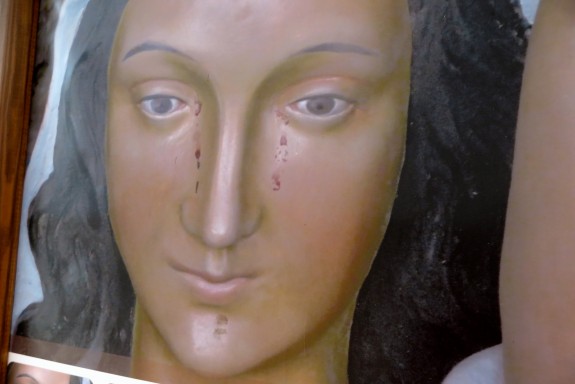
Before we left, we stopped by the parish church, which is decorated with colorful scenes from the life of Mary and Jesus.
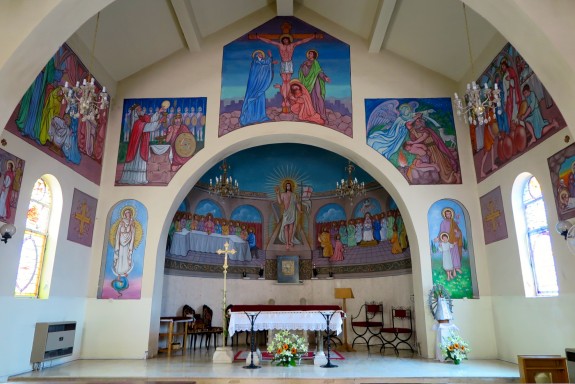
Heading for the bus, I asked Fr. Hugo for his blessing and told him to look me up when he’s in New York.
